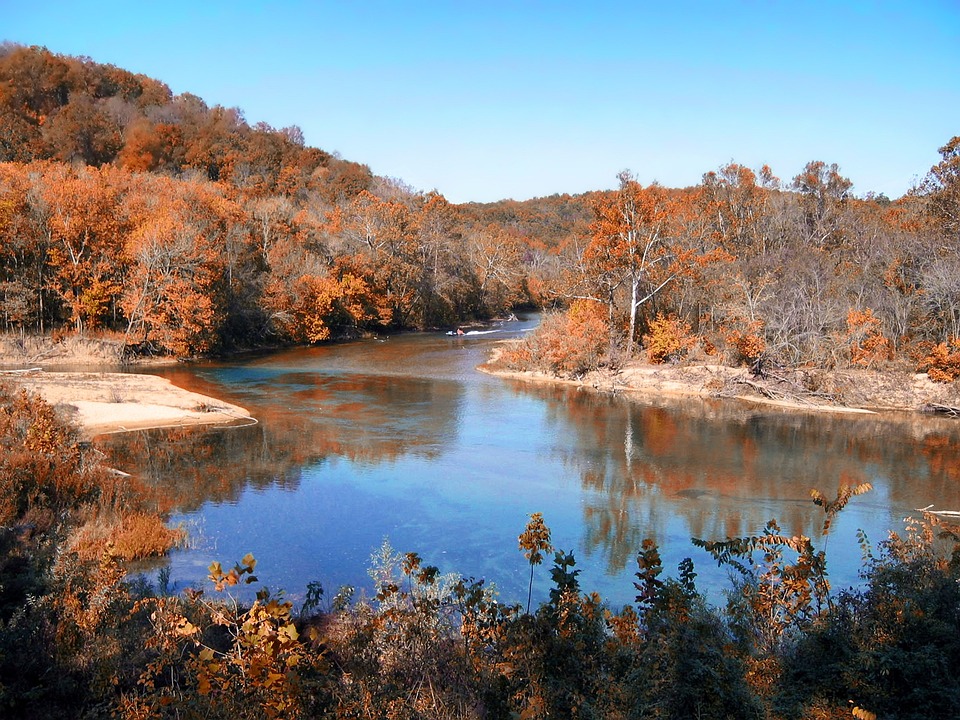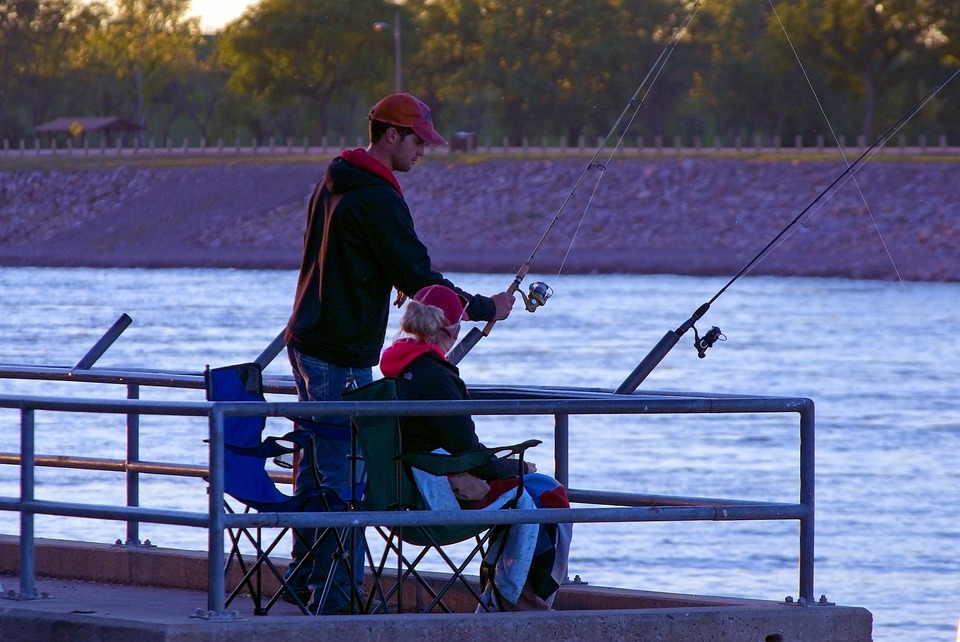Missouri state (USA)

Location
Missouri is located in the central United States, bordering eight other states: Iowa to the north, Nebraska and Kansas to the west, Oklahoma to the southwest, Arkansas to the south, and Tennessee and Kentucky to the east. The Missouri River, the largest river, flows east and joins the Mississippi River, which also borders Missouri on the eastern side. Missouri lies at the crossroads between the Midwest and the South, intertwining various cultural and economic influences. The state covers an area of approximately 180,000 square kilometers.
The capital of Missouri is Jefferson City, while its largest metropolises are St. Louis and Kansas City.
Climate and Landscape
Missouri has a transitional climate, ranging from humid continental in the north to humid subtropical in the south. Summers are hot and humid, with average temperatures between 25-30°C, and frequent thunderstorms, occasionally leading to tornadoes. Winters are mild, with occasional snow and thaws, averaging temperatures between -5 and 5°C. The state’s landscape is varied: flat plains with minor elevations in the north and the hilly, partially forested Ozark Mountains in the south. The mountainous areas of the Ozarks and the Ouachita Plateau add to Missouri’s scenic beauty and attract tourists, especially nature enthusiasts.

Population
Missouri has a population of over 6 million people, spread across various regions in the state. The largest cities include Kansas City, St. Louis, Springfield, Columbia, and Independence. The population in these cities is as follows:
- Kansas City – approximately 500,000 people
- St. Louis – around 300,000 people (but with suburbs, the metropolitan area has over 2.8 million)
- Springfield – over 170,000 people
- Columbia – about 120,000 people
- Independence – over 115,000 people
Racial Composition
Missouri has a diverse ethnic makeup, though the majority of residents are white. According to recent data, the racial distribution is as follows:
- White – 81%
- African American – 12%
- Latino – 4%
- Asian – 2%
- Other races and mixed populations – around 1%
Economy
Missouri’s economy is balanced and diverse, heavily influenced by agriculture, manufacturing, transportation, and service sectors. The state is a leading producer of corn, soybeans, and beef, benefiting from favorable natural conditions for agriculture. Major cities such as St. Louis and Kansas City are industrial hubs with aerospace, automotive, and food industries.
The minimum wage in Missouri is $12 per hour, a competitive rate at the mid-range compared to other states. Employment levels remain stable, with a poverty rate of around 12%, slightly below the national average. Missouri also has significant mineral resources, including lead and limestone, which contribute to the economic development of rural areas.

Missouri for Business
Missouri is a favorable state for business development due to its central location, infrastructure, and market access. Major transportation hubs, such as Kansas City and St. Louis, have international airports and extensive rail networks, enabling efficient product distribution across the country. This makes the state particularly advantageous for logistics and manufacturing companies, including Boeing, Emerson Electric, Anheuser-Busch, O’Reilly Automotive, Cerner Corporation, and Edward Jones Investments, which already operate facilities and offices here.
Tax Benefits
Missouri offers various tax incentives, including a reduced corporate income tax rate of 4%, one of the lowest in the United States. Additionally, businesses can take advantage of property tax reductions in certain Economic Incentive Zones (EIZs), where the government provides tax benefits to new investors. The state also offers grants and subsidies to support startups and innovative projects, particularly in technology, healthcare, and manufacturing sectors. Incentives are also available for those planning to establish businesses in rural areas, where development is supported through special programs.
Challenges of Starting a Business in Missouri
Despite its advantages, the state presents certain challenges for businesses. A key drawback is the competition from neighboring states such as Texas and Tennessee, which have even lower taxes or no corporate income tax at all, potentially diverting some investors. Additionally, new businesses face regulatory requirements at the municipal level, which can vary from city to city, complicating the registration and licensing processes.
Another issue is the shortage of workforce in specialized fields such as high-tech and engineering, requiring companies to recruit talent from other states or countries, which can increase payroll costs. Despite these challenges, the Missouri government is actively working to expand educational programs and collaborate with colleges to upskill the local workforce and meet business needs.
Real Estate
The real estate market in Missouri is attractive due to its affordable prices, especially compared to other central and western states in the U.S. Renting in major cities like Kansas City and St. Louis averages between $800 and $1,200 for a one-bedroom apartment in urban areas, while three-bedroom apartments can reach $1,800–$2,200. Buying a home remains affordable as well: the median home price in Missouri is around $220,000, one of the lowest in the country, making it appealing for those planning to purchase their own property.
In the suburbs and smaller towns, housing is even more affordable, with median home prices often below $180,000. Investment properties, such as rental units or commercial spaces, also hold high potential, as the demand for rental housing remains steady, especially in college towns like Columbia, home to the University of Missouri.
Ecology
Missouri is committed to environmental initiatives, though its industrial sector, particularly in St. Louis, contributes to air and water pollution. The state is actively working to reduce industrial emissions and supports the development of renewable energy sources, particularly wind energy, which is especially viable in flat areas. Local government programs also promote the creation of “green” spaces, including new parks, bike trails, and nature reserves that help improve residents’ quality of life.
One of the biggest environmental challenges remains the risk of flooding, especially along the Missouri and Mississippi rivers. To counter this, the state government invests in projects to improve protective infrastructure, such as levees and drainage systems, and conducts regular environmental assessments to proactively address potential issues.

Landmarks
Missouri has a rich history and cultural heritage, showcased in numerous landmarks that attract thousands of tourists annually. One of the state’s most famous symbols is the Gateway Arch in St. Louis — the tallest arch in the world, symbolizing the beginning of the westward expansion of the United States. The museum beneath the arch tells the story of the American frontier and is a must-visit for those interested in the country’s history.
Other popular tourist spots include the Ozark National Park, with scenic lakes and waterfalls perfect for camping, fishing, and hiking. Another popular destination is Table Rock Lake, an excellent place for water activities. In Branson, known as the “Entertainment Capital of the Midwest,” numerous music shows, theaters, and family-friendly attractions await visitors.
The historic town of Hannibal, birthplace of Mark Twain, invites tourists to explore sites associated with his life and works, including the writer’s home and the Mark Twain Museum. Fans of American literature will enjoy learning about the era and culture depicted in his books.
Why People Move to Missouri
Missouri attracts newcomers with its affordable cost of living, low housing prices, and developed infrastructure. Another important factor is the stable economy with diverse employment sectors, allowing people to find jobs in both major cities and suburbs. Low corporate income taxes, convenient transportation links, and small business support encourage career growth and entrepreneurship. Additionally, Missouri’s natural beauty, including lakes and mountains, appeals to nature lovers.
However, some may view the region’s frequent flooding near major rivers and the limited availability of specialized jobs in high-tech sectors as potential downsides, which could limit opportunities for certain professional groups. Despite this, residents appreciate the friendly atmosphere, moderate climate, and a balanced mix of urban and rural life, making Missouri an attractive place for family life and professional development.
Table of Contents